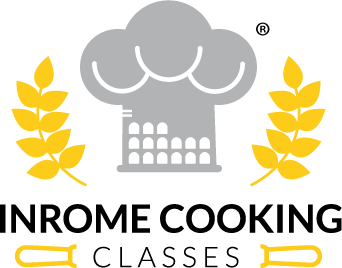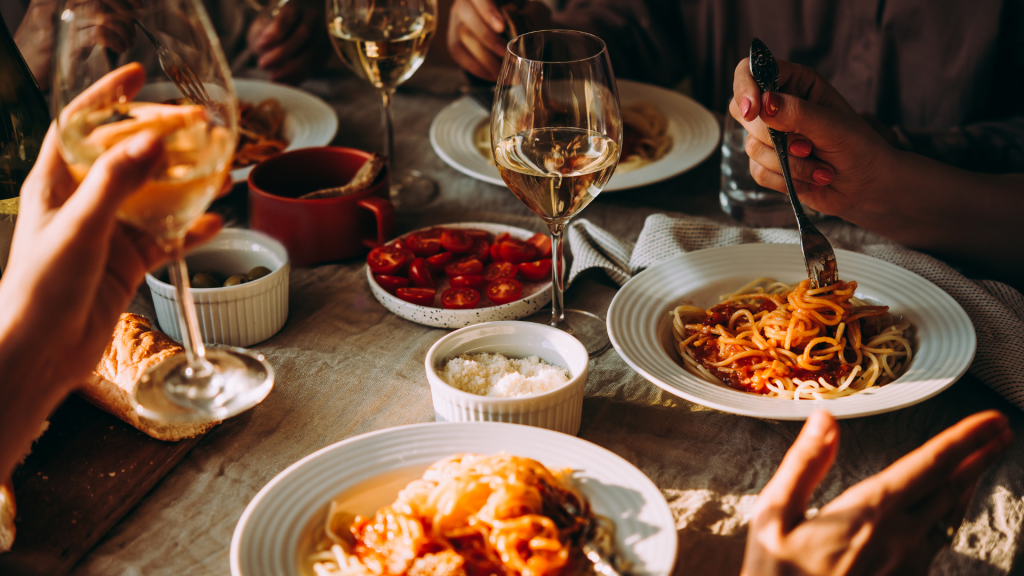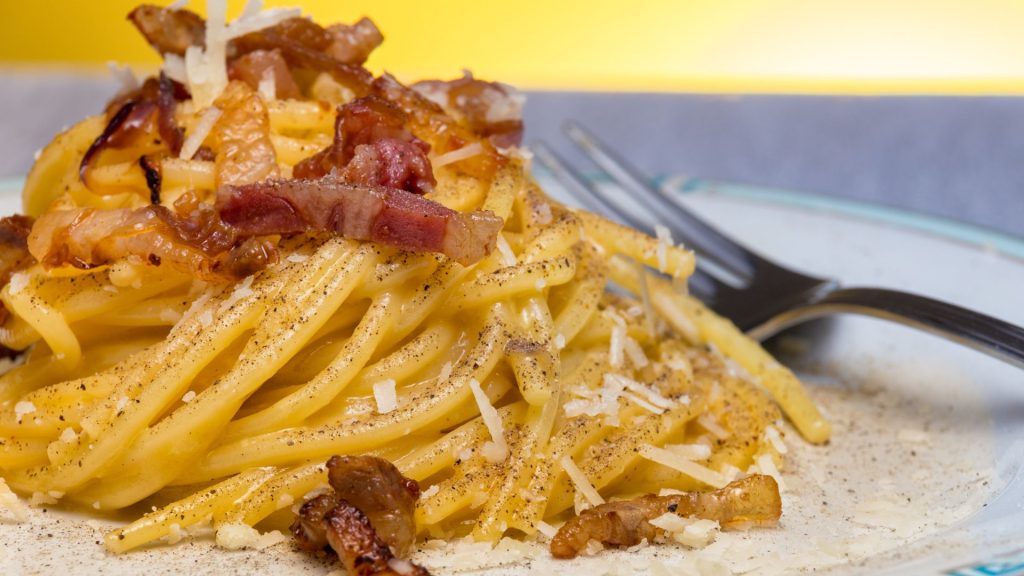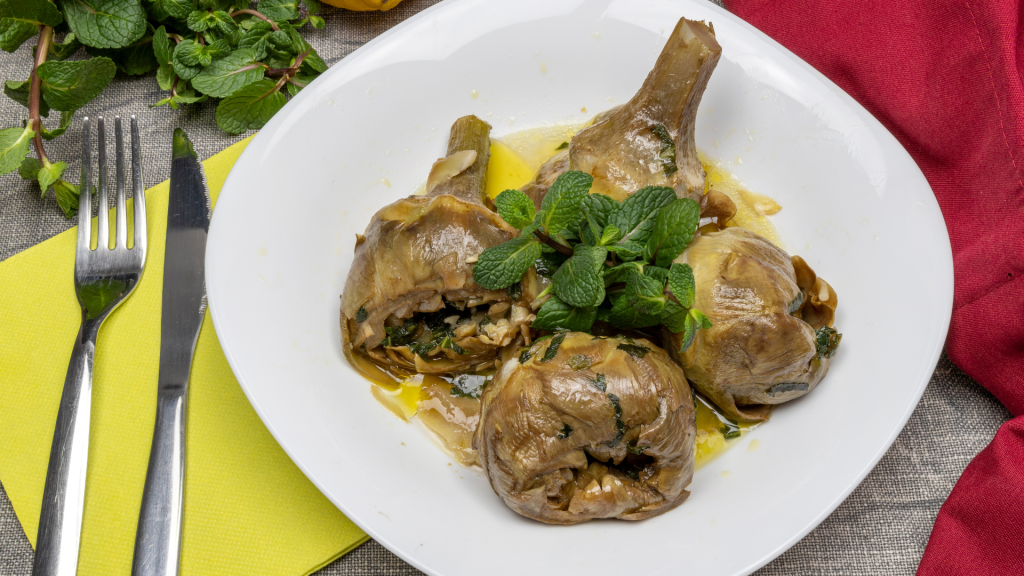Have you ever wonder why wine is such an essential element at the italian table? Beyond being part of a centuries-old tradition rooted deeply in the culture of Italy, wine represents conviviality, family, and above all…good food!
Food and wine are inseparable in Italy, especially in Rome, where culinary traditions are steeped in history, culture and bold flavors. For food lovers visiting the Eternal City, mastering the art of wine and food pairing can turn a simple meal into a sensory experience
Whether you’re savoring food in Trastevere or enjoying a pasta dish with a Colosseum view, knowing which wines best complement roman recipes is key. In this guide, you will learn how to pair wine with food, focusing on iconic roman dishes!
Why Wine Pairing Matter in Roman Cuisine
Bold, direct, and flavorful – Roman cuisine is known for its intensity, featured cured meats, salty cheeses, rich sauces and aromatic herbs. Pairing these historic flavors with the right wine is not just a detail, but an essential part of the meat that makes the experience unique.
The right wine can balance the richness of Carbonara, enhance the tomato sauce of Amatriciana, or soften the intensity of roman-style artichokes. A well-executed pairing respects the regional identity of Roman cuisine, linking each dish back to its culinary and agricultural roots.
How Regional Wines Complement Traditional Roman Flavors
Some of the best wine to pair with roman dishes comes from Lazio, the region that surrounds Rome. Over time, local wines have evolved alongside Roman cuisine, creating natural and harmonious combinations.
From Frascati Superiore, a white wine produced in the Roman hills, to Cesanese del Piglio, a native red from Lazio, and Bellone, found in the roman provinces – the regional wines reflect the simplicity and character of Roman food.
But Lazio is just the beginning. Wines from Abruzzo, Marche, Tuscany and Campania also offer exciting combinations worth exploring with traditional roman dishes.
Key Characteristics of Roman Cuisine and how they Influence Pairings
So, how can you find the right wine to pair with Italian and Roman dishes? The first thing is to understand the characteristics of Roman cuisine! Think dishes that are:
- Rich in flavor and salt: think about pecorino, guanciale and anchovies
- Bold yet simple: made with few, high-impact ingredients
- Accompanied by appetizers and sides: cured meats, artichokes, zucchini, puntarelle
So, the ideal wines should be:
- High in acidity to cleanse the palate
- With mild and moderate tannins
- Aromatic, either to complement or contrast the dishes
Curious to learn more? Explore our immersive cooking classes and learn how to prepare real Roman food from scratch!
Classic Roman dishes and their perfect wine pairing
Once you grasp the essence of Roman cooking and what of wine enhances it, it’s time dive into the best food and wine pairings for Rome’s most iconic dishes.
Cacio e Pepe
A creamy, peppery pasta dish that calls for a fresh,citrusy wine to balance the strong flavors without overpowering them.
- Best Pairing: Trebbiano d’Abruzzo (fresh acidity to counterbalance cheese and pepper)
- Alternatives: Frascati Superiore or Malvasia del Lazio
Carbonara
The symbol of Roman cuisine – creamy, salty, and rich. Il pairs well with light but structured wines.
- Best pairing: Pecorino (the wine, not the cheese)
- Alternative: Chardonnay from Lazio (structured, with good acidity)
Amatriciana
A tomato and guanciale-based classic, perfect with bold reds wine
- Best Pairing: Montepulciano d’Abruzzo
- Alternative: Chardonnay from Lazio (structured, with good acidity)
Saltimbocca alla Romana
A traditional second course from the Roman tradition which combines savory and sweet flavors.
- Best Pairing: Verdicchio dei Castelli di Jesi
- Alternative: Chianti classico (soft tannins, herbal notes)
Coda alla Vaccinara
A rich and intense stew that requires a robust wine.
- Best pairing: Cesanese del Piglio
- Alternative: Aglianico del Vulture (earthly and full-bodied)
Carciofi alla Romana
A historic side dish with tough leaves and a tender heart – perfect with slightly bitter wines.
- Best pairing: Verdicchio
- Alternative: Greco di Tufo (mineral and deep)
Want to fully master dishes like Carbonara, Amatriciana, and Cacio e Pepe? Our Roman Pastas cooking class is the perfect choice for you!
How to Embrace Italian Approach to Food and Wine
In Italy, pair wine with food is second nature – something even the ancient Romans practiced. That’s why Italians keep it simple, focusing on quality and local authenticity.
Still, here a few basic principles for anyone interested in learning how to pair wine with food:
- Balance acidity with fat, tannins with proteins, sweetness with spice or bitterness
- Let the dish lead the way – wine enhances the experience, but it’s not the star
- Sit, sip and savor: that’s the Italian spirit!
Experimenting with new pairings based on personal taste
Traditional pairings are a great foundation, but don’t be afraid to experiment. You might prefer a bold red wine with cacio e pepe, or a sparkling one with amatriciana.
Remember- taste is personal, and sometimes the most unexpected combinations offer the best surprises! As mentioned earlier, the wine and dishes are not the main stars: your experience and satisfaction are! So good luck with your pairing and
Buon Appetito!
Want to dive deeper into wine tasting and Roman gastronomy? Join one of our amazing Food and Wine Tours!







